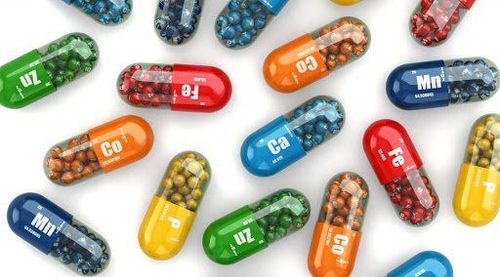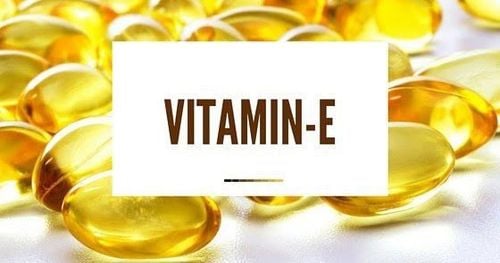This is an automatically translated article.
The solubility of vitamins in fat and in water by different mechanisms depends on the chemical properties of each vitamin. This difference has created the variety and unique properties of each vitamin. Therefore, understanding the differences is important in the use of vitamins, as well as in supporting more effective vitamin-supplemented regimens.
How the body absorbs different vitamins plays an important role in both effectiveness and safety, which is why understanding the difference between water-soluble and fat-soluble vitamins helpful.
1. Learn about water-soluble vitamins
As the name suggests, a water-soluble vitamin is easily absorbed into the body's tissues and metabolized faster than a fat-soluble vitamin.
Mostly water soluble vitamins (1): Vitamin B1 (thiamine), Vitamin B2 (riboflavin), Vitamin B3 (niacin), Vitamin B5 (pantothenic acid), Vitamin B6, Vitamin B7 (biotin), Vitamin B9 ( folate ), Vitamin B12 (cobalamin) and Vitamin C.
Any excess of a water-soluble vitamin, such as Vitamin B complex or Vitamin C, is excreted through urination. Many B vitamins and Vitamin C can be found in vegetables (such as leafy greens and other greens) and fruits (such as citrus fruits).
2. Fat-soluble vitamins Fat-soluble vitamins are absorbed by fat droplets in the body and then transported in the bloodstream. There are four types of fat-soluble vitamins, including Vitamin A, Vitamin D, Vitamin E, and Vitamin K.
Fat-soluble vitamins are found in high-fat food sources such as egg yolks, liver, beef, fatty fish and dairy products. Unlike water-soluble vitamins, any excess fat-soluble vitamins do not leave the body immediately. Instead, they are stored in the liver or fatty tissue for later use.

Vitamin tan trong chất béo được tìm thấy trong các nguồn thực phẩm giàu chất béo
3. Considerations for water-soluble and fat-soluble vitamins The main difference between water-soluble vitamins and fat-soluble vitamins is how they are absorbed and work in the body.
A major benefit to water-soluble vitamins is that their accumulation in the body is almost impossible, even in large amounts. This also means that because water-soluble vitamins are used up or excreted too quickly, you will need to get these vitamins into your body consistently through rich foods and supplements. nutrition to make up for your diet.
On the other hand, fat-soluble vitamins are stored in the liver and adipose tissue. Because these vitamins are stored in the body, they are more likely to be in excess. That's why it's important to follow the guidelines for vitamin supplements.
Comparison table between water soluble vitamins and fat soluble vitamins.
| Vitamin tan trong nước | Vitamin tan trong chất béo | |
| Vitamin | B, C | A, D, E, K |
| Vị trí hấp thụ | Ruột non | Ruột non |
| Chế độ ăn kiêng | Lượng dư thừa thường được phát hiện và bài tiết qua thận | Lượng dư thừa có xu hướng được lưu trữ trong các địa điểm lưu trữ chất béo |
| Độ hòa tan | Ưa nước | Kỵ nước |
| Viết hoa | Dễ dàng hấp thụ vào máu, di chuyển tự do trong máu | Được hấp thụ vào hệ thống bạch huyết, nhiều người yêu cầu chất mang protein di chuyển trong máu |
| Bảo vệ cơ thể | Không nói chung | Đúng |
| Sự thiếu hụt | Các triệu chứng thiếu hụt xuất hiện tương đối nhanh chóng | Các triệu chứng thiếu hụt chậm phát triển |
| Độc tính | Nguy cơ thấp | Nguy cơ cao |
| Cần tiêu thụ hàng ngày | Đúng | Không |
In summary, despite the fundamental difference between these two vitamins, your body needs both water-soluble vitamins and fat-soluble vitamins to have enough energy to function every day.
Each vitamin will have its own roles and functions for the development of the body. It is important that you understand and supplement properly and appropriately for the best effect.
Please dial HOTLINE for more information or register for an appointment HERE. Download MyVinmec app to make appointments faster and to manage your bookings easily.
Reference: verywellhealth.com - clinmedjournals.org













